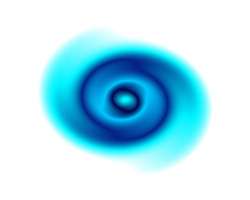Understanding a novel form of turbulence

French researchers from CNRS have provided solutions to important problems related to turbulent flow in stratified systems such as the oceans and the atmosphere.
A new class of three-dimensional (3D) turbulence known as zig-zag instability (ZZI) has recently been shown to be the cause of decoupling of horizontal layers in stably stratified fluids, those with layers of densities decreasing in the vertical direction. Such systems are common both in the atmosphere and the oceans.
The EU-funded ‘Three-dimensional structure of stratified turbulence’ (3DZZI) project was undertaken to evaluate the evolution of ZZI in experimentally forced stratified turbulence given that previous work on the phenomenon was restricted to conventional flows.
Scientists generated stratified turbulence using 12 vortex generators in a stably and linearly stratified tank. Velocity measurements confirmed that the flow organized itself into horizontal layers via ZZI.
ZZI can induce formation of so-called pancake vortices that in turn cause formation of secondary instabilities including shear and gravitational instabilities that are as yet not well understood.
Researchers numerically investigated the conditions of onset and evolution of secondary instabilities as a function of vertical thickness of the pancake vortex, enabling determination of stability boundaries for the parameters studied.
In addition, to gain further insight into gravitational instability in a pancake vortex, scientists analysed the stability of a linearly and unstably stratified fluid in solid body rotation. Results were generalised to obtain the radial distribution of velocity predicting dominant instability.
3DZZI outcomes have important implications for a number of geophysical flows in the oceans and atmosphere such as vertical transport of pollutants over urban areas.
Provided by CORDIS

















